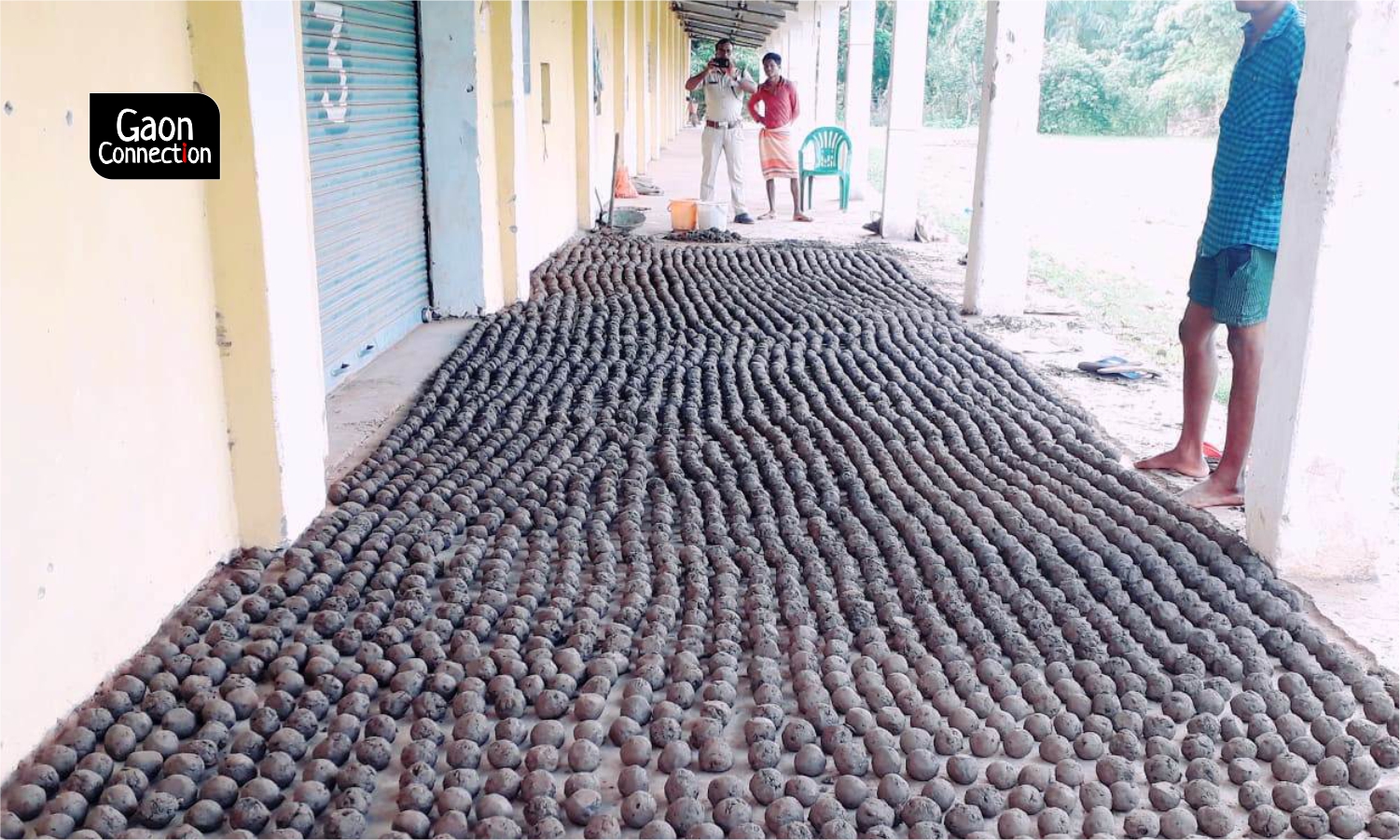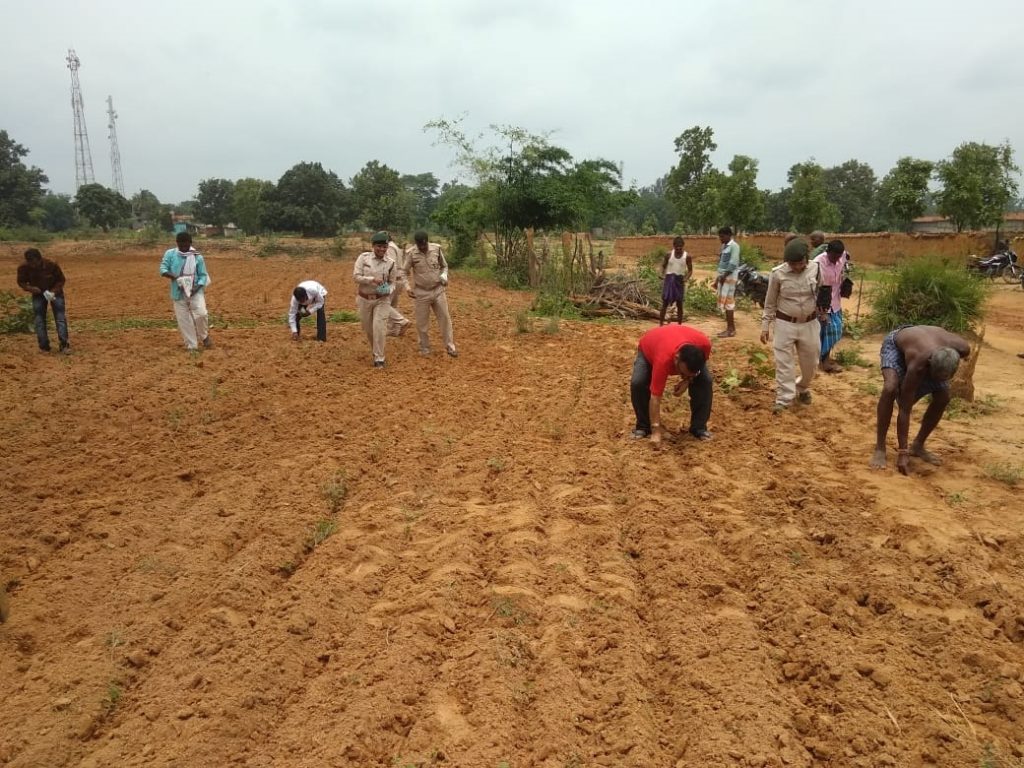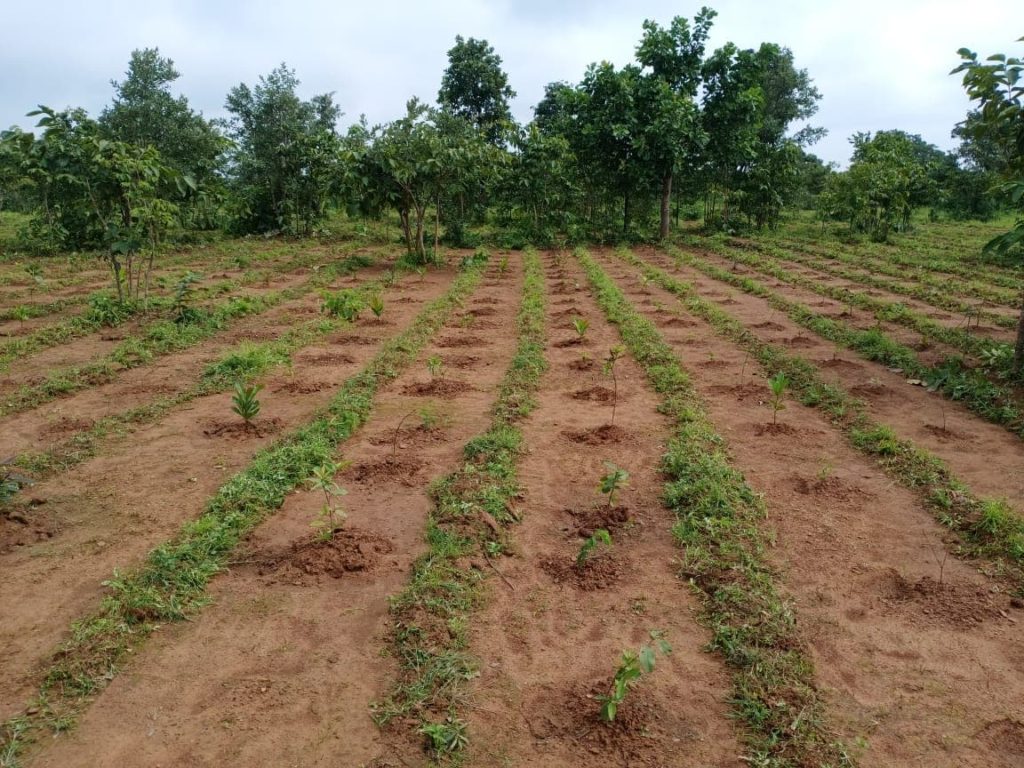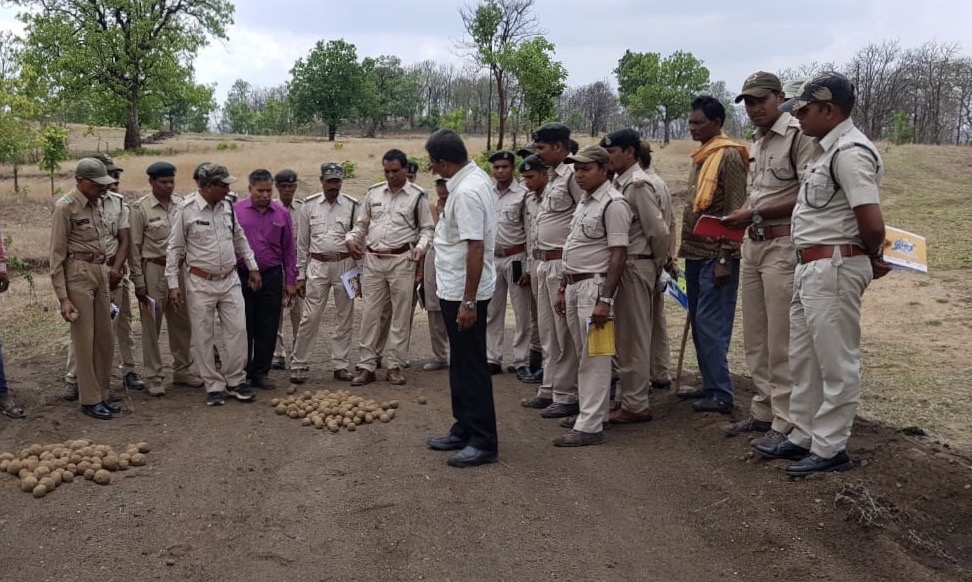Chhattisgarh hopes to end human-wildlife conflict using seedballs of fruit trees
After dispersing a million seedballs last year, the Chhattisgarh forest department has spread 2.5 million more seedballs this monsoon to regenerate the forests. Will this initiative bear fruit?


The Chhattisgarh forest department has spread 2.5 million seedballs to mitigate the human-wildlife conflict.
Kenda Ram Birhor, a resident of Khalbora village in Dharamjaigarh tehsil of Raigarh district, Chhattisgarh, is a worried man. His tehsil, about 267 kilometres away from the capital Raipur, is a hotbed for human-elephant conflict. According to the forest department, 18 people lost their lives last year and five more this year (till May 31), in encounters in the district.
“Elephants often stray into my village to raid the paddy crops,” Birhor told Gaon Connection. He is part of a 12-person forest protection committee of his village, set up by the Chhattisgarh forest department. There are 7,887 such joint forest management committees in the state, made up of people living in the villages on the fringes of the forests.
“Our job is to take care of trees inside forests. Other animals rarely enter villages and it is only elephants that continue to pose a danger to crops. I inform the forest department if there is elephant presence in the vicinity,” he explained.
Birhor’s village, Khalbora, and several other villages close by, have been a part of the seedball initiative of the state forest department, to recompense the trees that were felled for cultivation. Along with fruit trees, teak or shagun trees are also being grown here.

While last year, the joint forest management committees in Chhattisgarh scattered 46,500 kg of fruit seeds, made into one million seedballs, this year they have broadcast 2.5 million lakh seedballs inside the forests. Some of the seedballs have sprouted and even grown a little.
“We need to protect trees. So, on our part we sensitise village communities and appoint them to look after forests,” Manivasagan, divisional forest officer (DFO) of Dharamjaigarh forest division, told Gaon Connection.
Sowing seeds of survival
In Chhattisgarh, the districts of Jashpur, Raigarh, Korba and Dharamjaigarh are some of the hotspots of human-wildlife encounters. In the past five years, it is estimated that in the 35 forest divisions of Chhattisgarh, 325 people and 70 elephants have lost their lives in such encounters.
But a massive campaign by the state’s forest department with the help of the joint forest management committees, hopes to mitigate this conflict by addressing the root of the matter – the shrinking food resources in the forests for the animals. Launched in 2019, the campaign has been scaled up considerably this year.
The seedball campaign is an inexpensive way of growing fruit trees in forest areas, so that animals need not come out into human habitation in search of food. “It involves seeds of fruit-bearing trees being broadcast in open and degraded forest areas close to water sources. Our aim is to prevent animals from entering the villages in search of food and we will carry out periodic monitoring,” principal chief conservator of forest, Chhattisgarh, Rakesh Chaturvedi, told Gaon Connection.
In the Barsoor range of Dantewada, there are leopards, bears and elephants in the dense forests. “So, the forest department has only chosen open patches for the initiative so that green cover increases,” explained the ranger, Sukh Das Nag. Increasing the green cover, he hoped would keep the animals inside the forests.
Meanwhile, the seedball drive is almost complete in parts of Bansla village in Bhanupratappur, in Kanker district, about 155 kms away from the capital, Raipur. “We are erecting fences here not only to protect the seeds, but also prevent animals from entering the village,” the sarpanch Vishnu Prasad Nayak told Gaon Connection. The area also has a large number of monkeys, bears and hyenas and according to Dwarika Prasad Nag, a resident of the village, “While no lives have been lost, cattle have been killed for food.”

Growing seedlings through seedball
“We ask self help groups to make these seedballs and then we buy them. This allows them to make a little extra money for themselves,” Chaturvedi told Gaon Connection.
“There are many benefits of growing fruit trees. We can consume the fruits when ready and sell the excess produce in markets,” hoped Shankarlal Poyam, a resident of Titri village in Dantewada.
Each seedball costs anything between Rs 3 and Rs 5 to make. They germinate in 10-20 days, depending on the species. Seeds of fruit trees are embedded in balls of wet soil and compost, dried, then scattered inside forests or in open spaces and allowed to germinate. Depending on the species, the trees may take anything between 15 to 30 years to become a full grown tree, explained a forest official.
In East Bhanupratappur forest division, about 145 kms from Raipur, nearly 500 kg of fruit seeds have been distributed among villagers for them to make seedballs. The seeds include those of mangoes, jamun (black plum), karonda (a type of berry), jackfruit and the ber (Indian jujube).
“Elephants love to eat ber. So the forest department is ensuring there are many of those along with the peepal (sacred fig) and the bargad, (banyan),” said Mayank Agrawal, DFO of Gariyaband district that lies about 150 kms away from Raipur.

Eco-restoration: the way forward
The seed ball technique, if it is made to work, can regenerate wildlife habitats, say some wildlife experts. “It is a good way of eco restoration and covers large areas rapidly,” Jayant Kulkarni, executive director of Pune-based non-profit, Wildlife Research and Conservation Society told Gaon Connection. But the seedlings should be of native species, they should be regularly monitored and protected from fire and grazing, he cautioned.
Protecting the seedballs is key to regenerating forests, and the areas where the seedballs have been broadcast must be cordoned off for it to be really effective, reiterated Swati Gole, chairperson of Ecological Society, a Pune non-profit, told Gaon Connection. The first step to restore lands is to protect the lands and, she believed, if this could be ensured then lots of regeneration could happen.
Meanwhile, some forest officials in Chhattisgarh have expressed their reservations about the effectiveness of the seedball technique working without adequate protection. “Without fencing off the area being targeted, the technique may not work,” DFO of Keshkal forest division Dhammshil Ganveer told Gaon Connection. Seedballs are meant for difficult terrain where planting saplings is a problematic task; otherwise they may not survive long enough to grow into trees, he said.
“To what extent seed balls work in forest regeneration and restoration is a huge question mark. We need more study to say how effective it is,” said Ramesh Venkataraman, founder of grassroots non-profit, Junglescapes, based in Bengaluru. But he agreed that if the seedballs were made in the right way they were useful to use in inaccessible areas. “Chhattisgarh should monitor the outcome, and ensure that the seeds are of a pioneer species (pioneer species are the first to colonise an ecosystem previously damaged),” he recommended.

However, the forest department will continue using the seedball technique. One of the main reasons for the campaign to continue is that it is an inexpensive way of regenerating forests, when compared to other ways of reforesting, Chaturvedi told Gaon Connection.
The principal chief conservator of forests explained how the per hectare cost of the ‘plantation method’ was much higher than the seed balls one. “Under plantation, the per hectare cost is two-and-a-half lakh rupees for five years. In the case of seedballs, we just scatter them and large areas are covered. Generally, two thousand balls are scattered in one hectare, and this costs no more than six thousand to ten thousand rupees. There is no maintenance and we only have to monitor,” said Chaturvedi.
According to him, fencing involves a lot more expenses even if it meant a 60 to 70 per cent survival of the seed balls. Leaving the seedballs to nature without fencing protection meant a 25 to 30 per cent survival rate, but it was a lot cheaper, he reasoned.
The seed ball method is being adopted in Maharashtra with a modicum of success by the Wildlife Research and Conservation Society. “We also find that the seedball is cost effective than regular tree plantation. We are doing a similar project in the Western Ghats in the corridor between the Koyna Wildlife Sanctuary and the Chandoli National Park in Maharashtra, which is also part of the Sahyadri tiger reserve,” Kulkarni informed Gaon Connection. We are doing a long-term restoration of private forests through seedballs in an attempt to reduce human-wildlife conflicts, he added.
Road kills, feeding of monkeys, etc, has also increased human-animal encounters. “In my area many hyenas have been killed in road accidents. And people regularly feed the monkeys. We have formed a patrol team and asked the public to put a stop to this practice,” sub-divisional forest officer Mona Maheshwari of Keshkal told Gaon Connection. They are also planting more fruit bearing trees in a portion of the ghati (valley) to ensure enough food for the animals.
As the seedball technique finds increasing favour in Chhattisgarh, the question remains if the peace offering of fruit trees will lessen encounters between humans and wildlife. The forest department in the state is counting on it.

